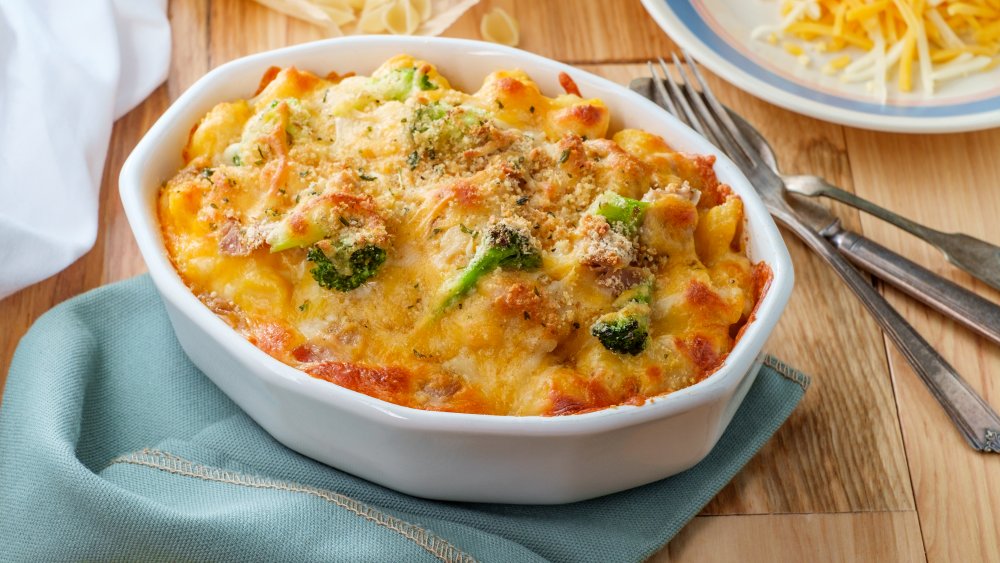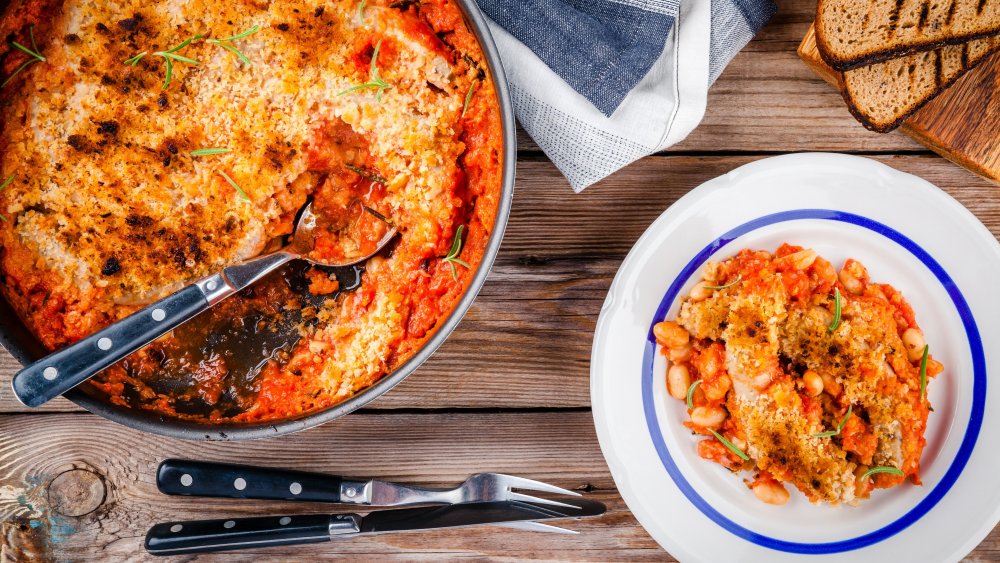The Real Difference Between Casseroles And Cassoulets
The term casserole means different things to different people. From a vegetable-heavy dish that began appearing in American cookbooks towards the end of the 19th century (via The Seattle Times) to a meal that rose to popularity in the 1950s and '60s as a way to use up any kind of leftovers (and a can or two of creamy condensed soup), most everyone is familiar with casseroles of one form or another. But what exactly qualifies a food as a casserole can get a bit murky. Some believe, as The Kitchn declares, that a dish that has simply been baked in the oven constitutes a casserole. But The Daily Meal goes into greater detail, theorizing that a casserole is a meal served in the container it's baked in whose ingredients include a combination of meat and/or vegetables, something starchy like pasta or potatoes, a liquid-like stock or milk, and perhaps a topping of cheese or breadcrumbs.
By that definition, the French dish known as cassoulet is a casserole. But, one of the other defining characteristics of many casseroles is something a traditional cassoulet certainly doesn't possess: convenience. Casseroles of the "dump and bake" sort, like a hashbrown casserole or a chicken and rice casserole, come with the built-in benefit of being relatively hands-off (via Better Homes & Gardens). Cassoulet is nearly the exact opposite of this kind of convenience and is one of those dishes you want to dedicate days (yes, days!) to, if you're making it the authentic way.
Cassoulet is a very involved casserole
While cassoulet technically qualifies as a casserole, you shouldn't associate it with the sort of meal you can toss together, slide into the oven, and enjoy an hour later. Cassoulet, while undoubtedly delicious, is labor- and time-intensive. It's a dish that hails from France where, according to Bonjour Paris, they have no exact equivalent to the American casserole and where "un casserole" is actually a saucepan, not a calorie-laden, edible treasure.
Cassoulet purists will likely follow a recipe similar to Bon Appetit's, which begins by sourcing some rather obscure ingredients like pre-cooked garlic sausage, duck legs, and some thin-skinned, creamy French beans called Tarbais beans. You'll also need a large hunk of pork shoulder, pancetta, and a pound of fresh pork sausage because it seems there's no such thing as too much rich, fatty protein when it comes to cassoulet. After the beans are soaked and simmered, the duck legs are salt-cured and confited, and the pork shoulder is braised until tender in a saucy tomato ragout, these and the remaining components get layered into a large pot, topped with breadcrumbs, and baked. The result is both a cassoulet and casserole, making it quite possibly the epitome of comfort food, albeit a far cry from the familiar, convenient baked dishes we know so well.

